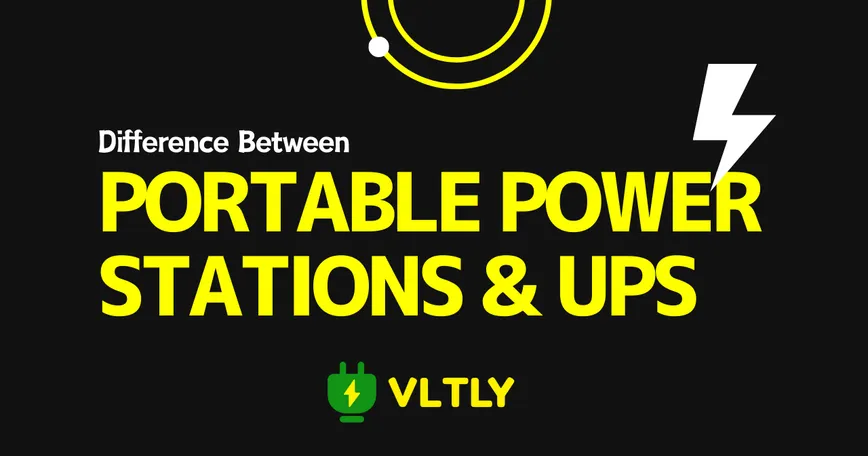
Difference Between Portable Power Stations and UPS: A Guide to Choosing by Use
Although portable power stations and UPS devices may seem similar, they serve different purposes. This guide explains their differences and provides advice on choosing the right one for your needs.
Posted at: 2024.8.20
Table Of Contents
What is a Portable Power Station?
A portable power station is a transportable power supply device, primarily consisting of a battery and various ports.It often includes USB ports and AC output ports, allowing it to power a variety of devices.
Battery capacities vary by model, ranging from small units to high-capacity ones. The appeal of portable power stations lies in their portability and flexibility, making them suitable for use in various locations such as outdoors or while traveling.
What is a UPS (Uninterruptible Power Supply)?
A UPS (Uninterruptible Power Supply) is a device designed to provide temporary power during power outages or voltage irregularities.
It is mainly used to protect critical equipment, such as computers and servers, where data loss might occur during a power outage. UPS devices typically include a battery and an inverter, and they immediately supply power from the battery when the main power supply fails, providing enough time to safely shut down the equipment. They also feature surge protection to guard against voltage spikes and overvoltages.
Key Differences Between Portable Power Stations and UPS
The Biggest Difference: Downtime
A UPS is designed to instantly supply power during a power outage. Therefore, the downtime (the switch-over time from main power to battery power) of a UPS is typically between 2 and 10 milliseconds (ms).
On the other hand, portable power stations with EPS (Emergency Power Supply) functions take several tens of milliseconds. For example, the Eco Flow River 2 has an EPS function that switches to battery power in 30ms1.
While 30ms is still very fast, some applications, such as servers or medical devices, may require less than 10ms of downtime, meaning portable power stations may not fully replace a UPS in these cases.
Power Supply Duration
The main difference between portable power stations and UPS lies in the duration of power supply.
Portable power stations are designed for mobility and long-term use, equipped with large batteries capable of providing power for several hours to several tens of hours. In contrast, UPS systems are designed for short-term backup, typically providing power for a few minutes to tens of minutes. This is to ensure safe shutdown of critical equipment rather than for prolonged power supply.
Thus, portable power stations are generally superior in terms of backup time.
Portability
As the name suggests, portability is a key feature of portable power stations. Small models weigh less than 2kg, while larger models are around 10kg, making them relatively easy to transport. This allows for convenient power access while on the go or traveling.
Conversely, UPS systems are usually designed for fixed installation and are too heavy and large to be easily moved. They are installed in specific locations such as homes, offices, or data centers, and are rarely relocated.
Which Should You Choose?
Choose Based on Usage Scenarios
The choice between a portable power station and a UPS depends on the usage scenario. For outdoor activities, travel, or emergency situations where power needs to be secured while moving, a portable power station is suitable.
On the other hand, for office or home power outage protection, a UPS is more appropriate. Installing a UPS is essential for protecting critical equipment such as computers and servers.
Consider Acceptable Power Outage Duration
As explained, UPS systems often have batteries designed for outages of less than one hour, primarily intended for maintenance or temporary disasters.
If you require a power system that can continue running beyond one hour of outage, using a combination of a portable power station and a UPS is ideal.
Using a portable power station as a power source for a UPS allows the UPS to handle short-term downtime, after which the portable power station can take over.
However, be cautious of battery degradation and fire risks due to repeated pass-through charging or overloading, so choose carefully.